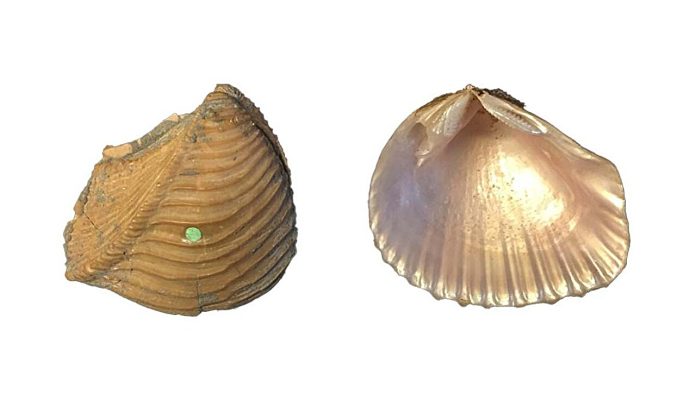
Clams, mussels, oysters, and scallops are not just dinner menu staples—they’re also key players in marine ecosystems.
These bivalves filter water, improve habitats, and provide food for other creatures. But today, many bivalve species are at risk.
Human activities such as pollution, overfishing, habitat destruction, and climate change are pushing them closer to extinction.
Scientists say we are now living through a modern mass extinction, and bivalves are among the species that may not survive.
However, bivalves have faced global disasters before—and some of them made it through.
Now, scientists are looking back at one of the most famous extinction events in Earth’s history for clues that could help protect these animals today.
About 66 million years ago, a massive asteroid struck Earth, hitting what is now Mexico. The impact wiped out the dinosaurs and caused up to 78% of all life on the planet to vanish.
While the destruction of life on land is better known, ocean life was hit hard too.
Marine temperatures swung wildly, sunlight was blocked, and food chains collapsed. Among the victims were over 60% of bivalve groups, or genera.
Dr. Katie Collins, a mollusk expert and co-author of a new study published in Science Advances, says this extinction event completely changed the roles of bivalves in the oceans.
While most bivalve families survived, the species within them changed drastically, and their functions in ecosystems shifted.
Some families that were once dominant became rare, while others rose to fill their roles. This unpredictable reshuffling of species is what Collins and her team call a “chaotic rebuilding.”
The researchers studied almost 2,000 bivalve genera from before and after the asteroid impact, as well as modern species. By analyzing their shells, they could tell what kind of lifestyle each species had—whether they burrowed, swam, stuck to rocks, or did something more unusual. The shape of the shell, they explain, often determines what a bivalve can do, much like how a bird’s body shape affects its ability to fly.
Their findings suggest that while the overall functions of bivalves remained, the specific species doing each job changed completely. That’s an important lesson for today. Since it’s impossible to know exactly which bivalve species will survive modern environmental stress, scientists recommend focusing conservation efforts on preserving the wide range of functions bivalves serve in ecosystems.
Some bivalves, like true mussels, are flexible and can adapt to new roles. Others, like the rare glass scallops—bivalves that can both swim and eat meat—are extremely unique. If these rare species go extinct, their traits may never evolve again.
By learning from the past, scientists hope to make smarter decisions about what to protect now. The extinction that ended the age of dinosaurs might hold the key to helping today’s bivalves survive—and continue cleaning our waters and supporting marine life into the future.
Source: Natural History Museum.



